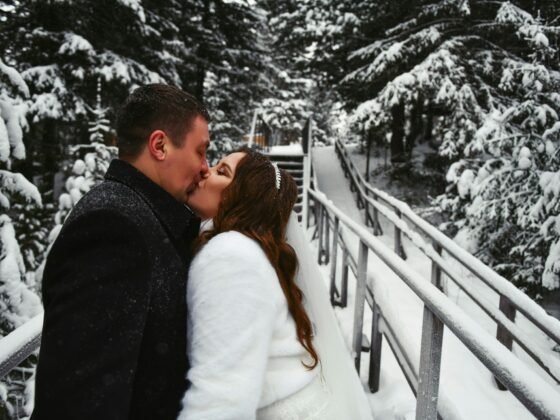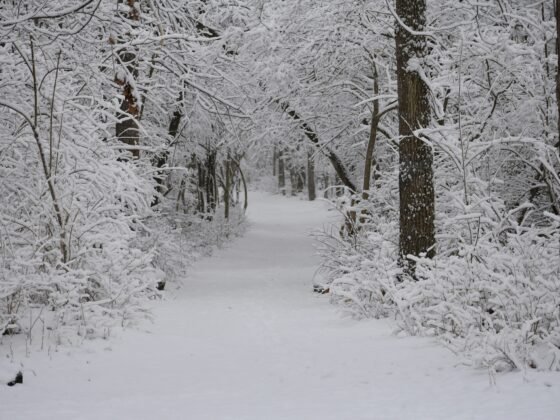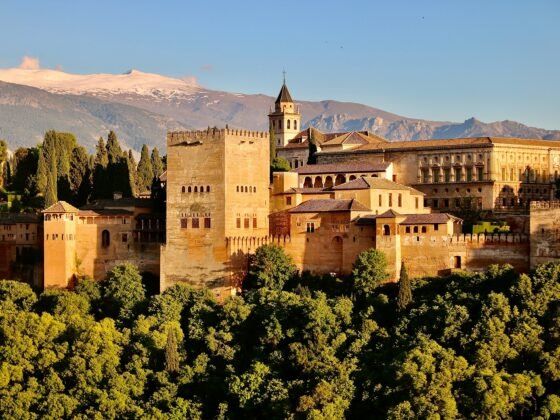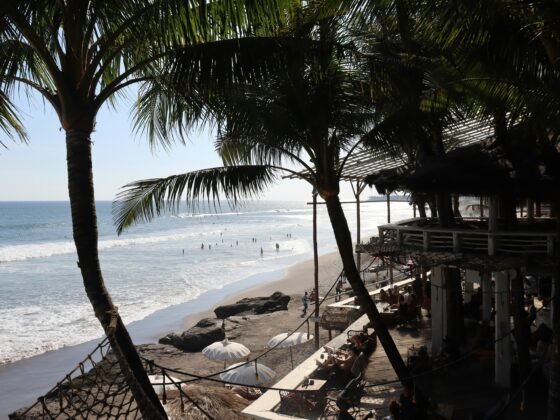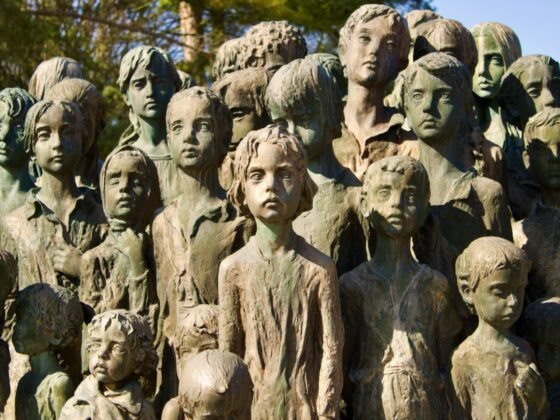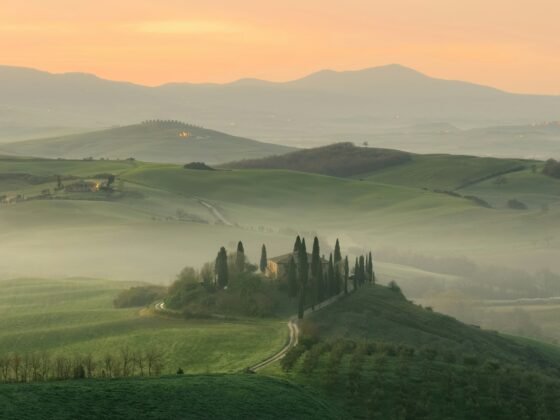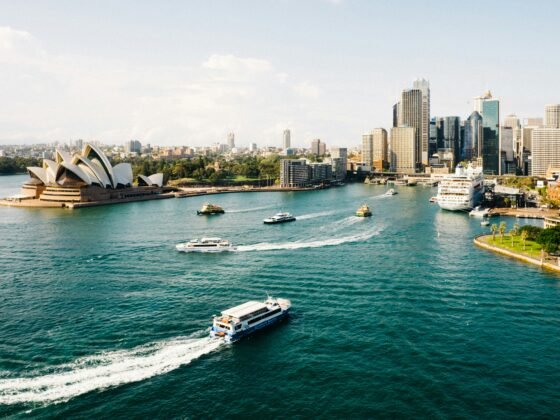Sri Lanka is a hot destination and not just because of its lovely weather. Sitting off the south-east coast of India it’s blessed with a tropical climate, stunning beaches on which to make the most of it and a rich and long cultural history. The annual monsoon makes its forests and plantations green and lush and with the end of its long civil war it is once more safe to visit.
This year it has featured on the Top Ten lists of several national newspapers and magazines and a little research into this fascinating destination soon makes it obvious why it is there. If you want to visit in 2015, there’s a whole range of great itineraries and attractions for you to visit in Sri Lanka.
Sri Lanka’s History, Culture and Heritage Sites
Old Dutch Fort at Galle
At the very south of Sri Lanka lies the Galle Old Dutch Fort which is the best preserved sea fort within the entirety of South Asia and an important historical location. Originally built by the Portuguese in 1588, the Fort lies some 173km from the capital city Colombo and is an important site culturally spanning some 222 acres in total. The architecture is interesting and notable for replicating the ancient fortifications that stood along Portugal’s’ coastlines in years gone by. In 1640 the town of Galle fell to the Dutch and today both the Dutch and British colonial influences can be witnessed within the local Galle architecture.
Anuradhapura
The city of Anuradhapura is the oldest within Sri Lanka’s Golden Triangle and was established in 5 BC and is today an important heritage destination. Originally the countries’ capital city, Anuradhapura was rich in elaborate royal palaces, sprawling monasteries and bejewelled temples. Today the remains can be explored by wandering the parks marvelling at the dagobas (temples) and Thuparama some of which contain relics of Lord Buddha.
Sigiriya Rock Fortress
Sigiriya is an impressive rock fortress built by the ruling monarch of the 5th century. Also called Lion Rock this construction is certainly a huge testament to the power engineering and ancient construction methods. The central heart is formed of terracotta and grey rock and rises up though the forest to a height of 200m and is an impressive sight. Remains of the ancient city can be glimpsed too amongst the moats and water gardens there are remnants of a pair of lion’s paws, whose stone monuments would have stood proudly beside the royal palace.
Polonnaruwa
Polonnaruwa became the second capital city after Anuradhapura was invaded in the 10th century. King Parakramabu transformed Polonnaruwa into a glorious walled city during his reign in the 11th century. Visitors today can witness the huge reservoir he had built (Parakrama Samudra) as well as the ruins of vast monasteries, ornate temples, stunning palaces and wonderful Buddhist statues. Polonnaruwa today sits within a forested park which is surrounded by impressive moats.
Sri Lanka’s position as more than just a beach destination are confirmed as travellers looking for “sun and beach” has recently fallen from 59% in 2008/09 season to 49% in 2011. Travellers are drawn more by the culture and varied excursions on offer.
Nuwara Eliya – Visit a tea plantation and factory
The mountain station of Nuwara Eliya dates back to the 19th century and has the look and feel of a traditional English town, thanks to the colonial past. Nuwara Eliya stands at 1,868 m (6,128 ft) and is the heart of Sri Lanka’s Hill Country. Nuwara Eliya is the birthplace of Ceylon Tea and there are lush green tea plantations as far as the eye can see across the rolling mountains. Visitors can visit a working tea plantation, learn about the history, watch tea being graded and produced at a tea factory and sample some genuine and original Ceylon tea.
Temple of the Tooth, Sri Dalada Maligawa
The Temple of the Tooth is a sacred historical site within Kandy city and is home to the most sacred relic within Buddhism – Lord Buddha’s tooth. Buddhists from across the world converge here to explore the Royal Complex for themselves combining the Temple of the Tooth and also Kandy Lake which features prime Sri Lankan architecture including both the Kings Palace and also the Queens Palace. There are also other notable sights including the ancient Royal Summerhouse, the vast Audience Hall and a Royal Boathouse which was used by past dignitaries.
Recent figures show that the average Sri Lankan trip lasted 10 nights with British and German tourists staying an average of 14 to 21 nights.
Sinharaja Forest Reserve
Include a stop at the Sinharaja Forest Reserve on your trip and marvel at the 73sq miles (190 sq km) of carefully preserved forest reserve. Sinharaja is a UNESCO recognised site and a tropical virgin rainforest, home to endemic island flora, fauna and wildlife. Sinharaja is an incredibly important wildlife hotspot too as there are 86 mammal species to be found here including the Sri Lankan elephant, giant squirrels, the purple-faced langur and the odd leopard (although a sighting is very rare).
Wewurukannala Vihara Temple
The Wewrukannala Temple in the town of Dikwella is probably the most extraordinary Buddhist temple within Sri Lanka. The main draw is the Seated Buddha statue which rises to 160ft and dates back to the rule of King Rajadhi (from 1782 to 1798). One part of the temple depicts the outcome for those who do not follow the Buddhist path of enlightenment with graphic models of demons and sinners displayed in life size proportions.
Colombo
Sri Lanka’s bustling capital city offers plenty to do both day and night. There are some interesting museums such as the largest Sri Lanka National Museum which features relics from the Kandyan Kings in the 17th century. The Dutch Period Museum details the Dutch colonial rule period with artefacts and the Natural History Museum is worth a look too. To escape the heat of the city head to the Talangama Wetland to observe the nature and wildlife. Get in a game of golf whilst here with a round at the Royal Colombo Golf Club. The most popular Buddhist sight in Colombo has to be the Gangaramaya (Vihara) Temple.
Golden Temple of Dambulla
The ancient Dambulla cave temple has been an important site for both Hindus and Buddhists since the first century. This is Sri Lanka’s single most popular heritage site and the cave monastery is the home of Buddhist monks. Murals dating back some 2,000 years adorn the walls and show the Lord Buddha in all their original intricacy. There are also several shrines within Dambulla that house some 157 Buddha statues in various poses. The highlight has to be the reclining Buddha which extends to an impressive 15 meters. Dambulla also holds the crown as home of the biggest antique painted surface on earth thanks to the vibrant frescos upon the walls and ceiling.
Beaches and Resort Sites in Sri Lanka
Trincomalee
Trincomalee is situated Sri Lanka’s east coast and is home to an impressive deep water harbour where crafts of all sizes can use the natural harbour in all weathers. Trincomalee’s main draw however are the impressive beaches where locals and travellers alike congregate to surf, fish and scuba dive. Time your visit right and you can also take a whale watching trip here too.
Alankuda Beach
If you fancy a spot of wildlife spotting or watersports then Alankuda Beach is a great spot. Located on the North West coast, Alankuda offers fantastic whale and dolphin posting opportunities. Watersports enthusiasts can try wind surfing, kite surfing and snorkelling here. You can also go kayaking, swimming and canoeing.
Negombo
Negombo features heavily in many mainstream holiday brochures, not least because of its incredible accessible location, just 7km from the main airport. There are good quality resort-style accommodations here including a few all-inclusive hotels. Situated on the Negombo lagoon amongst coconut palms this feels like a tropical getaway, although the proximity of the airport can soon dispel that.
Beruwala and Bentota
Travel a little further south of Negombo and you have the popular tourist locations of Beruwela and Bentota. Still easily accessible (via a 65km drive from Colombo’s airport) these two destinations are a great all-round favourite. Beruwala and Bentota regions are separated by the river and both offer exotic beaches, luxury hotel resorts complete with spa facilities, and a whole host of adventure and activities. Relax and enjoy a traditional ayurvedic treatment or try your hand at one of the many watersports on offer here such as scuba diving, parasailing and water skiing.
Surprisingly 70% of respondents of a recent survey were travelling as a family, specifically with children aged up to 15, reinforcing the fact that Sri Lanka is a popular family-friendly destination.
National Parks
The Buddhists on the island held a traditional belief in the importance of conservation and this is mirrored today with an impressive 9 National parks and 7 Bird sanctuaries within Sri Lanka. There are over 12,000 endangered species on earth with 43 to be found with the national parks here. Sri Lanka is home to an impressive range of both sea and land mammals, especially for such a small country, including the Asian Elephant and the Blue Whale. Visit Galle’s turtle hatchery site where you can watch five species in action and possibly witness turtles coming ashore to build nests and lay their eggs. See sloths, elephant and leopard at the Wilpattu National park, see 50 different butterfly species at Wasgamuwa National Park and explore Horton Plains National Park; marvel at the cloud forest and gawp at World’s End and marvel at Baker’s Falls.
Yala National Park
The Yala National Park is the most visited National Park in Sri Lanka and features in many mainstream holiday brochures thanks to the fact that Yala is home to the island’s leopard population. Visitors can take a jeep safari across the park which spans 377.919 sq miles in the very heart of the island. At Yala you can see elephant herds, the rare leopard, various reptile and bird species too. Go to Yala with a reputable operator as competition between jeep drivers is quite fierce.
Nature and Wildlife in Sri Lanka
Royal Botanical Gardens at Kandy
Visit the Royal Botanical Gardens in Kandy, aka Peradeniya Botanical Gardens which is renowned for a stunning collection of rare orchids. More than 1.4 million people visit annually to experience the arboretum and impressive plant collections for themselves.
Tourism to Sri Lanka grew 30.8% in 2011 (based on travel figures from 2010) with some 850,000 international arrivals. Get in quick!
Pinnawela Elephant Sanctuary
The Pinnawela Elephant Orphanage near Kegalle is both an elephant orphanage and also a breeding center for the captive elephants. Pinnawalla has the largest number of elephants in captivity anywhere in the world with a herd of around 88 elephants. Opened in 1975 tourists can visit the center, watch the elephants being trained and bathed and even feed a calf for themselves.
Mihintale
The Mihintale Mountain region saw both the arrival and growth of Buddhism within Sri Lanka and hosted the highly revered monks lead by Arahath Mahinda Mahathera. The Buddhist sanctuary grew impressively to include stupas, uposathgharas and bodhigharas by royal appointment, to assist the monks in their teachings. There were also 68 cave dwellings which acted as shelter and refuge for the monks.
Kurunegala
Either walk the city or take a tuk-tuk to explore. Visit the impressive Giant Buddha monument which stands proudly on the top of Elephant Rock and enjoy a walk beside the Kurunegala Lake. There are also local markets selling handicrafts and cultural artefacts.




